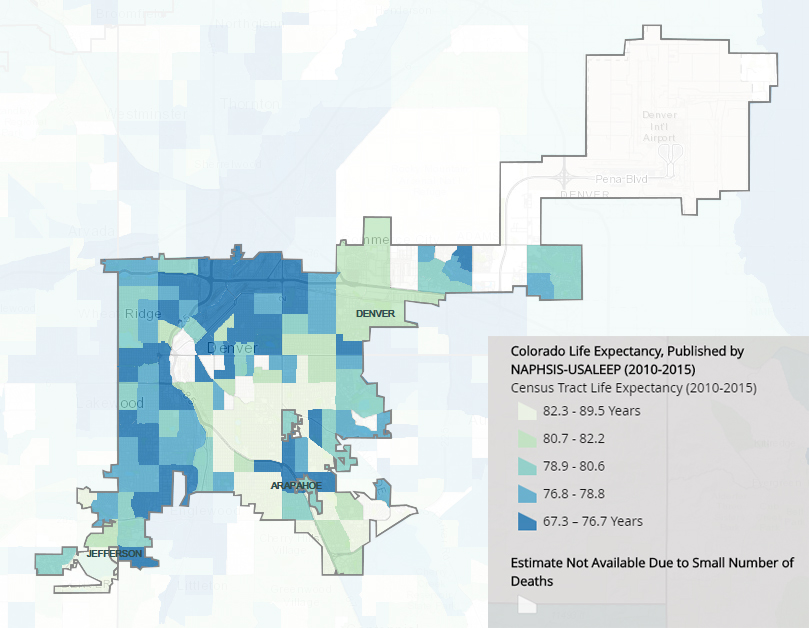What is Health? When Zip Codes Determine Life Expectancy
August 25, 2020
What’s the difference between two people that live a mile and a half apart?
About 13 years in life expectancy, if you’re comparing residents in Washington Park to those in the Valverde neighborhood of Denver, just east of I-25.
It’s difficult to understand how someone in Valverde can expect to live to 72, while their neighbor in affluent Wash Park will average 85 years. On a map, that geographic distance is almost inconsequential. Yet when you peer into the lives of individuals living in these communities, you begin to see vast differences in their lifestyles, which greatly factor in to their overall health.
Residents living in Wash Park are surrounded by social and environmental factors that promote health and well-being. Houses are in good condition and the neighborhood is generally safe. Educated families and high-income earners flock to the area. Grocery stores with fresh produce are close by and it’s a short walk to access outdoor recreation. Most people have a car and enough flexibility in their schedules to allow them to stay up-to-date on doctors’ visits.
By contrast, in Valverde homes are more likely to be dated and in need of repairs. Rent is cheap, however many low-income earners have no choice but to live in a home that may have unsafe environmental conditions. Residents are surrounded by fast food options but only one grocery store. A car may not make financial sense for some, so they rely on public transportation. Many low-wage jobs don’t allow for the flexibility that’s required for daytime doctors’ appointments, and their health insurance is usually insufficient to cover their needs.
Over a few months, anyone living in either area probably wouldn’t experience a drastic change in their life expectancy. But over a lifetime, those factors compound, resulting in the drastically different life expectancies we find between the two neighborhoods.

Denver Health is all too aware of these disparities. As a part of our mission, we work throughout our most vulnerable communities to offer access to care for everyone. Denver Health Foundation donors help support nine health clinics that are strategically placed in low-income neighborhoods. Our school-based health centers, which operate in over 18 public schools throughout the city, offer free care to children – over 80% who qualify for free or reduced lunches. By continuing your commitment to Denver Health Foundation, you’re eradicating socio-economic barriers and helping to promote a better life for everyone in our city, one small step at a time.
Would you like to know the average life expectancy of your neighborhood? Explore this map, provided by the Colorado Department of Public Health and Environment, to see how the areas that we live, work, and play are deeply influential to our overall health.